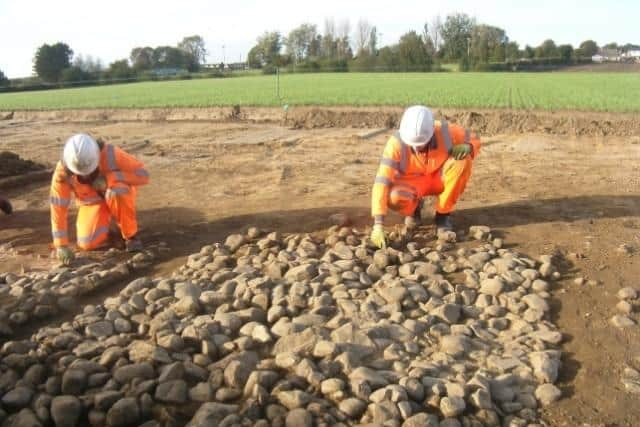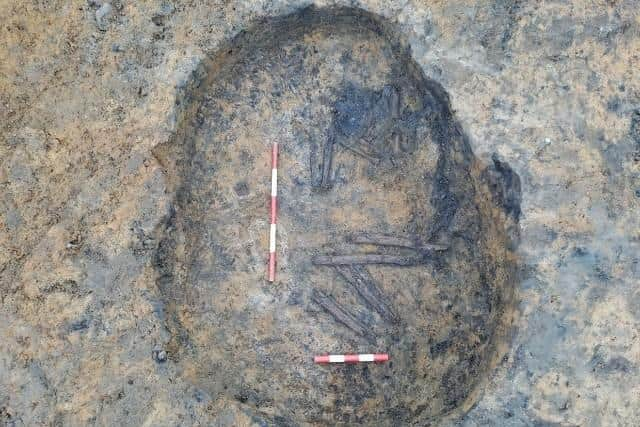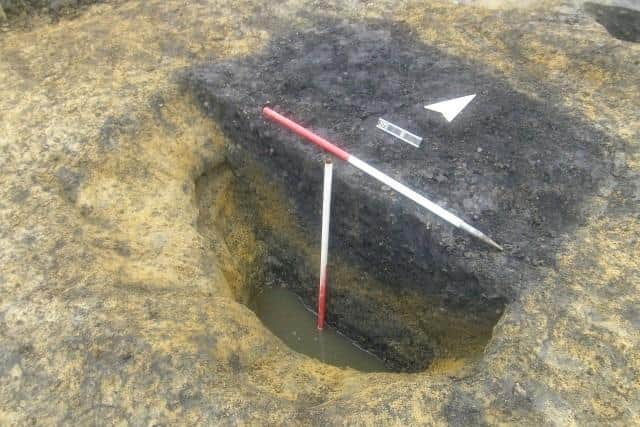Roman road and ancient human remains found close to 'burnt mound' while digging sewer for new £400m Yorkshire super prison
The remains, which could be 4,500 years old, were discovered during work on a new sewer for the £400m “super prison” near Full Sutton, which is due to open next year.
Another unexpected discovery by a team working for Yorkshire Water, was closer to Stamford Bridge, where part of the foundations of a previously unknown and much later Roman Road were revealed.
Advertisement
Hide AdAdvertisement
Hide AdThe foundations of the road was flanked by drainage ditches and its alignment suggested it led northwards towards the scheduled remains of the Roman town of “Derventio” at Reckondales.


While that helps towards understanding the Roman forerunner to the bridge at Stamford Bridge, Ecus Archaeology say it is the prehistoric findings found close to Full Sutton that are most important.
The small, circular burial monument was the first site uncovered during the £5m project. It had been flattened by ploughing, but remains found in the grave were surprisingly well-preserved, given the acid soil conditions.
The grave was backfilled with a mixture of burnt stone and charcoal from the “burnt mound”, which seems to have help the bones survive.
Advertisement
Hide AdAdvertisement
Hide AdThe individual was laid to rest in a foetal position and the grave was surrounded by a ring gully, a common feature of burials across the country in prehistoric times.


It would once have been covered by a dome-shaped mound of earth or stone and dates back to the Later Neolithic or Early Bronze Age. Burnt mounds are relatively common in upland areas where they survive as mounds of burnt stone and charcoal, but in lowland areas have often being ploughed flat.
Little is known about what they were used for. Previous excavations of similar sites in the UK and Ireland have shown water was an important part of the process with troughs lined with wood or clay being discovered.
The main theory is that stones were heated up and placed in the troughs to heat water, either during the process of dyeing cloth or cooking.
Advertisement
Hide AdAdvertisement
Hide AdAlternatively, some burnt mound sites include structures that could have been used as saunas.


At Full Sutton a small earth oven, still containing stone from when it was last used, was found, as well as a deep pit that appeared to have been a well.
Archaeologists were excited to find the well’s wooden lining was preserved where it was below the water table.
The Category C jail, which will be run by a private contractor, is being built next door to maximum- security HMP Full Sutton.
